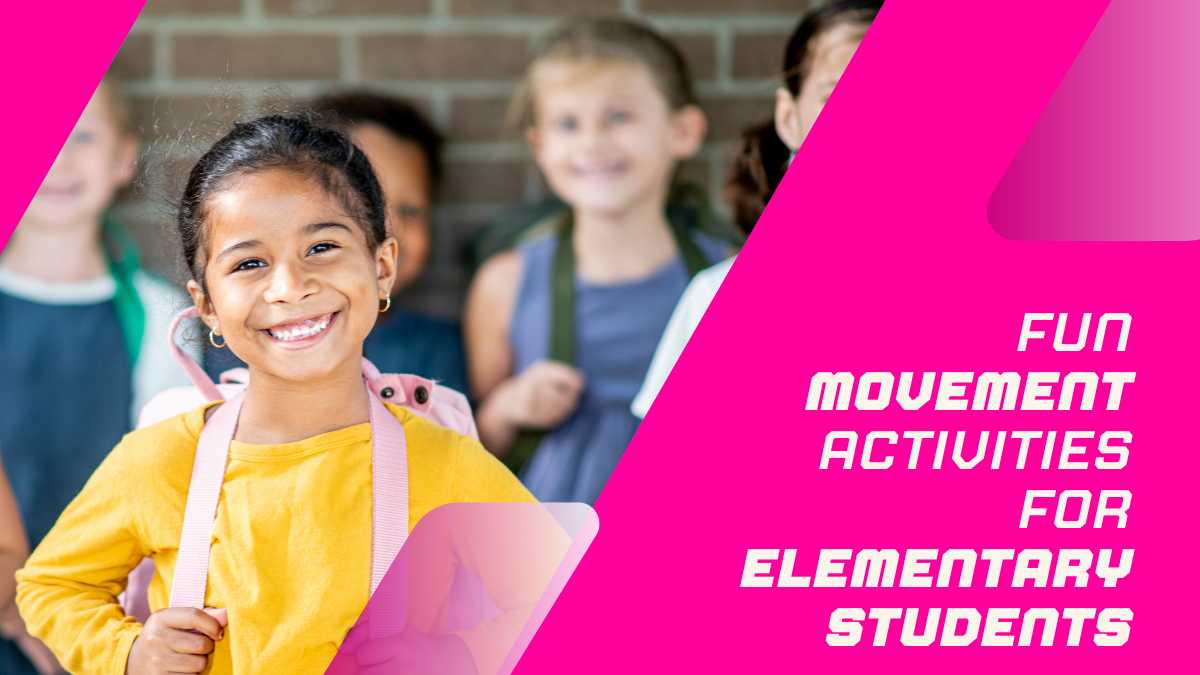Movement activities for elementary students are a great way to engage children in physical activity and learning. They can help to develop coordination, balance, and strength, as well as improve concentration and focus. Movement activities can also be used to reinforce classroom learning and can be adapted to suit different age groups.
Table of Contents
What are Movement Activities in General?
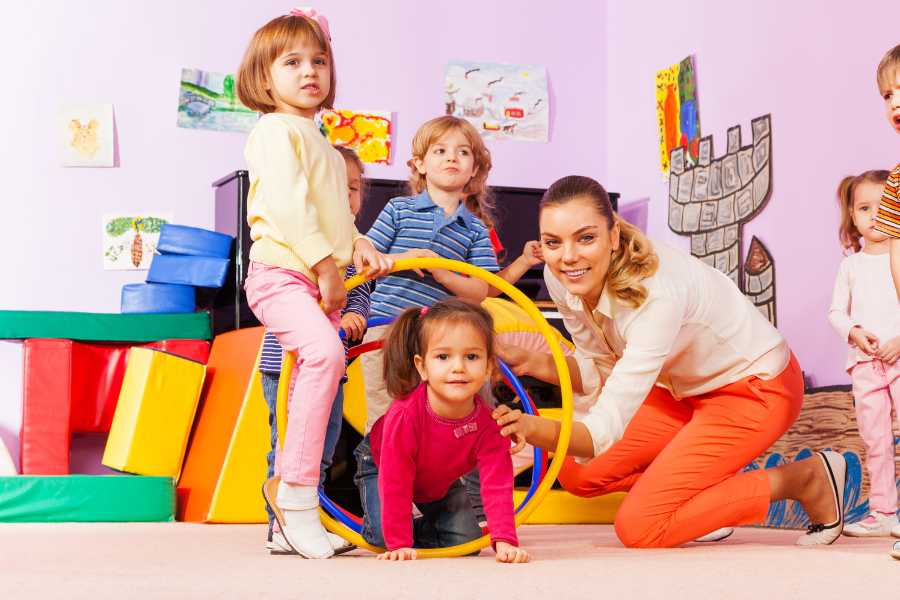
Movement activities, also known as gross motor activities, refer to various games, actions, or activities that involve the use of large muscles in the body, contributing to the development of gross motor coordination. Children naturally engage in movement activities, and if given enough freedom to play, they will regularly seek opportunities to move and play.
While unstructured play is important, there are numerous types of movement and gross motor activities that adults can facilitate with children, providing opportunities for the large muscles to work together. Such activities may be useful when children need a break from intense activities, have had limited outdoor play, or when adults want to promote the development of specific skills or simply spend some enjoyable bonding time together.
Movement activities offer opportunities to develop various skills such as turn-taking, cooperation, vocabulary development, and social skills, in addition to gross motor skills such as strength, balance, hand-eye coordination, agility, and speed.
What are the Benefits of Movement Activities for Elementary Students?
Movement activities are an important part of elementary education, as they provide students with a range of physical and intellectual benefits. Regular movement can help to improve concentration levels, increase energy levels, and reduce stress and anxiety.
Moreover, these Movement Activities for Elementary Students build different skills among them, such as strength and coordination skills, develop motor skills, i.e., balance and agility, and more.
It also enhances creativity, promotes positive social interaction and self-esteem, encourages problem-solving abilities, fosters healthy relationships with peers, and supports team-building efforts in the classroom or on the playground.
Types of Movement Activities to Try in the Classroom
There are many different types of movement activities that can be used with elementary students. These activities range from traditional sports and games to fun and entertainment. Some of the games are explained below;
- Tag Hopscotch
- Dodgeball
- Basketball
- Creative Activities like Dance Parties
- Scavenger Hunts
- Obstacle Courses
- Yoga.
Additionally, there are a variety of Movement Activities for Elementary Students available that could be implemented in order to encourage teamwork and collaboration among peers while also having fun. No matter the chosen type, it should always focus on being physically active rather than passive so that all students benefit from its effects.
Creative Ideas to Keep Kids Moving at Home or In School

Keeping kids active and engaged in physical activity can be challenging for parents and teachers alike, especially when the weather isn’t suitable for outdoor play. However, there are many creative ways that children of all ages can keep moving inside and outside the classroom.
Some ideas include: setting up an indoor obstacle course using everyday items, such as chairs, cushions, or blankets, and creating an imaginary world where children must move around together in order to explore it. Moreover, it can be done by playing classic games like tag with variations, having dance parties with different styles of music, doing yoga poses, etc. These activities depend on indoor space availability.
While outdoors can be done by utilizing a playground and other available resources. There are also a variety of group activities to encourage teamwork amongst peers that could range from relay races, hula hoop challenges, or even choreographed dances.
With some creativity, it is possible for parents and teachers to create exciting experiences for improving physical health as well as cognitive development among elementary-aged students – no matter what environment they may find themselves in.
Strategies For Managing Time During Movement Sessions
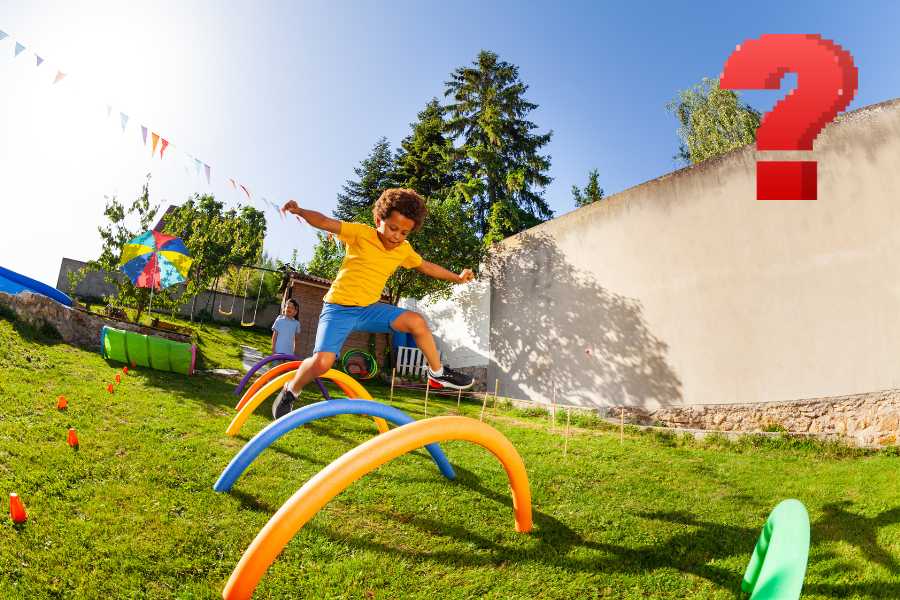
Time management is an important factor to consider when planning movement activities for elementary students. It will ensure that all participants are able to get the most out of their experience. Here are some strategies which teachers can use to manage time effectively during these sessions:
- Setting clear expectations before beginning any activity will help keep everyone focused and complete tasks within a certain time frame.
- Providing plenty of time for practice before beginning the actual activity itself will assist in managing time efficiently.
- Having spotters available if necessary ensures safety measures that will help them to perform the game smoothly throughout its duration.
- Divide tasks into smaller chunks may prove beneficial, especially if there is a limited time available.
This way of arranging Movement Activities for Elementary Students will set out more achievable goals ahead. It will also encourage problem-solving abilities and team-building efforts among students as well.
Movement Activities for Elementary Students
In this article, we are going to elaborate on some of the best Movement Activities for Elementary Students. These activities include a lot of creative ideas to keep students moving in school, strategies for managing time, and engaging students in physical activities.
1. Move and Spell Sight Word Game
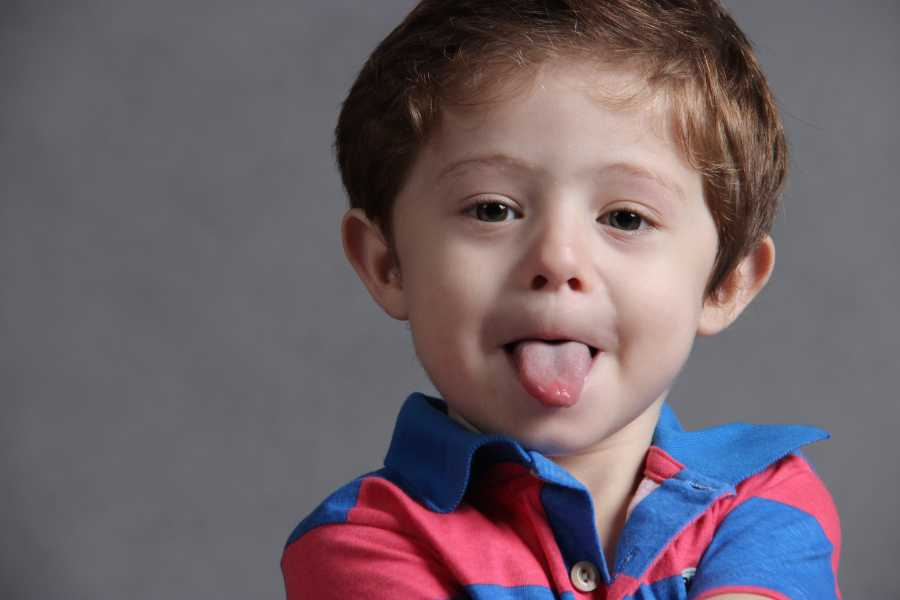
“Move and Spell” is a fun and engaging sight word game that can be played with elementary students. To play the game, the teacher or facilitator calls out a sight word, and the students then spell the word by physically moving their bodies to form the word’s letters.
For example, if the sight word is “jump,” the students might jump in place to form the letter “j,” then crouch down to form the letter “u,” and so on. This game is not only a great way for students to practice spelling and recognize sight words, but it also incorporates movement and physical activity. It is a fun and engaging Movement Activities for Elementary Students to learn.
2. Fast Find Scavenger Hunt
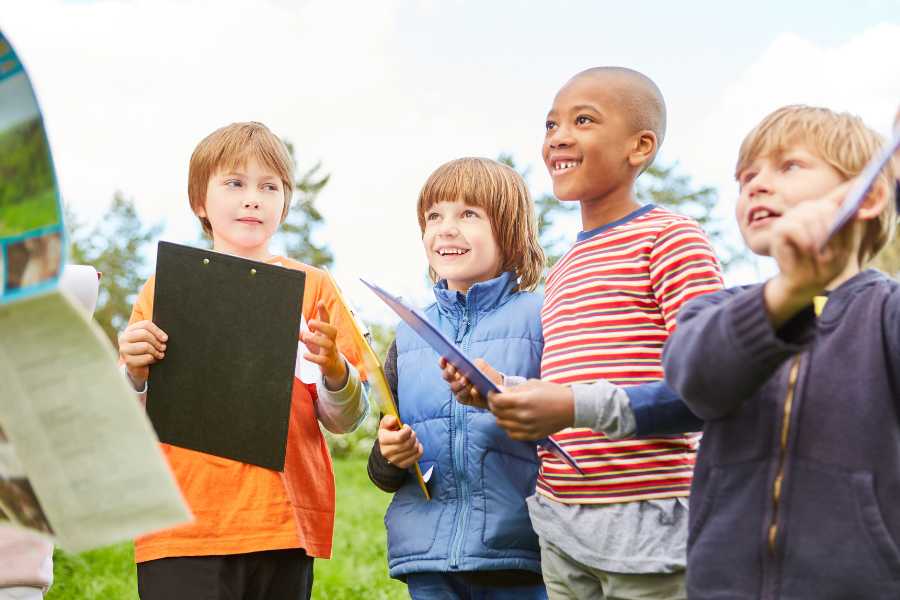
“Fast Find Scavenger Hunt” is a fun and educational activity that can be played with elementary students. To play the game, the teacher or facilitator provides a list of items or clues for the students to find around the classroom or school. The students then race to find all of the items on the list as quickly as possible.
The scavenger hunt can be tailored to any subject or theme, making it a great way for students to learn and review concepts in a fun and interactive way. Additionally, the game encourages teamwork, problem-solving, and critical thinking skills, as students work together to locate the items and solve the clues. Overall, “Fast Find Scavenger Hunt” is a great Movement Activities for Elementary Students to engage and promote active learning.
3. Hopscotch
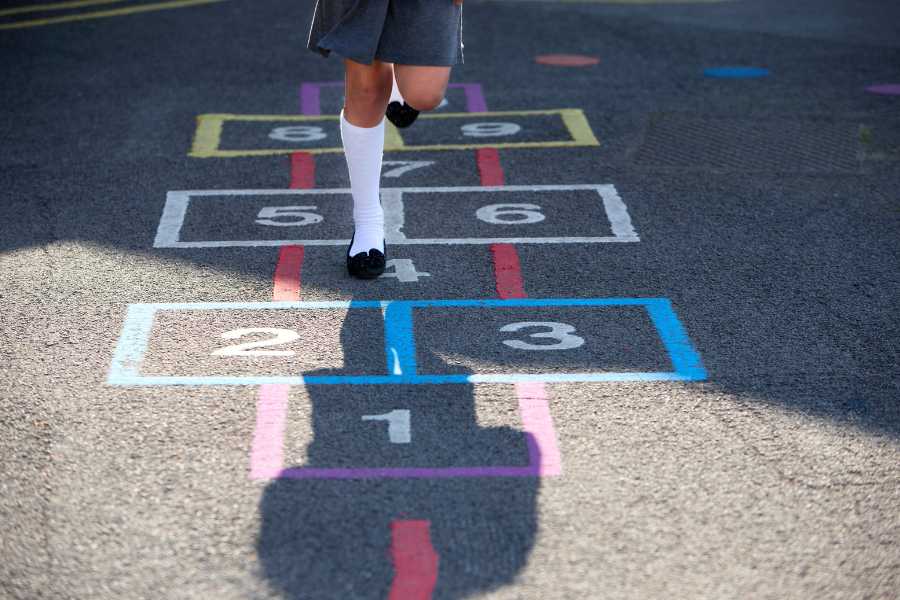
“Hopscotch” is a classic game and a popular Movement Activities for Elementary Students. The game involves drawing a hopscotch grid on the ground or floor, consisting of squares numbered one to ten. Players take turns hopping through the grid, starting with square one and completing the course by jumping on the last square and turning around. If a player successfully completes the course, they then toss a small object, such as a beanbag or pebble, onto the next numbered square and repeat the process.
It is not only a fun and entertaining movement activity for elementary students, but it also helps to promote gross motor skills, balance, coordination, and spatial awareness. Additionally, the game can be adapted to include sight words, math problems, or other educational concepts, making it a great tool for learning and reinforcement. This activity promotes physical activity and cognitive development among students.
4. Incorporating Movement into Learning Experiences

Integrating movement activities into the classroom can be an effective way to engage students in learning experiences that are both physically and mentally stimulating. By incorporating physical activity, teachers can create a more interactive environment where children not only learn new skills but also have fun while doing so.
This type of instruction has been proven to increase student engagement, improve memory retention rates, promote problem-solving abilities, and foster positive social interactions among peers. Additionally, it provides opportunities for creativity as well as team building efforts which all contribute towards creating a holistic educational experience for elementary-aged students.
5. Simon Says
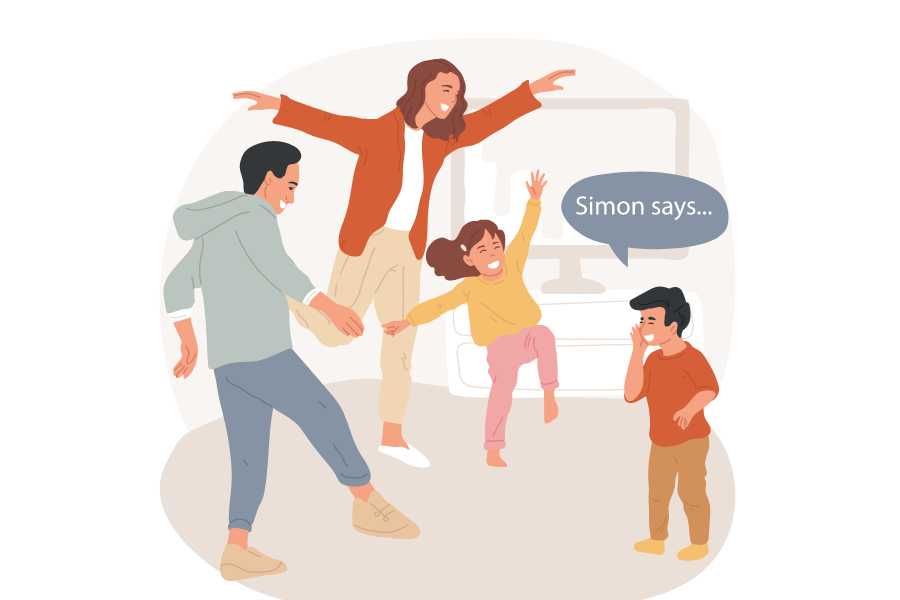
Simon Says is an enjoyable game that involves following instructions related to movements. The game involves choosing one person, Simon, who will provide the instructions that the other players need to follow. However, the instructions that the players must follow are only the ones that start with “Simon says,” while those without these words should not be followed.
Apart from enhancing listening and attention skills, Simon Says can also improve gross motor skills by providing an opportunity for larger muscle movements. It will prove an exciting Movement Activity for Elementary Students, with a specific focus on skills building.
6. Fun and Engaging age-appropriate activity

Movement activities for elementary students can be a great way to stay engaged and get physical and mental benefits. However, in order to ensure that all ages are having fun during these sessions, certain elements should be taken into consideration when planning out the activity. Firstly teachers should select age-appropriate activities which challenge yet don’t overwhelm participants.
This will help keep everyone interested while still ensuring safety measures are taken at all times (e.g., having spotters when doing certain exercises). Music or props can be incorporated into sessions to make them more enjoyable for all ages involved, as well as encourage creativity through imaginative play, such as creating an imaginary world where children must move around together in order to explore it.
7. Outdoor Spaces Movement Activities

Outdoor spaces provide a great opportunity to engage children in physical activity. It also allows them to explore and learn about their natural environment. There are many ways that teachers can utilize outdoor areas when planning movement activities, such as nature walks; obstacle courses; relay races, or tag games with variations like ‘freeze’ or ‘capture the flag.’
Using playground equipment is another option that lets students practice balance and coordination skills while having fun. It is important, however, that all safety measures be taken into consideration before beginning any type of activity outdoors. With some creativity and careful planning, teachers can create engaging outdoor experiences and Movement Activities for Elementary Students.
8. Tight-Rope Walkers

You can engage elementary students in a fun movement activity that helps them improve their balance and concentration skills. The activity involves pretending to be tightrope walkers and walking along a piece of string that’s laid on the ground or slightly elevated and tied to the legs of chairs. To start, demonstrate the proper technique of placing one foot carefully in front of the other along the string without losing balance. Encourage the students to keep their arms out to the sides if they are walking on a tightrope.
To make the activity more exciting, you can add imaginary obstacles to avoid or pretend that falling off the string means falling into a river of crocodiles. This Movement Activity for Elementary Students encourages them to concentrate harder on maintaining their balance and work on their balance and concentration skills. Moreover, this activity can be easily set up using simple materials such as a string and chairs.
9. The Hula Hoop Contest
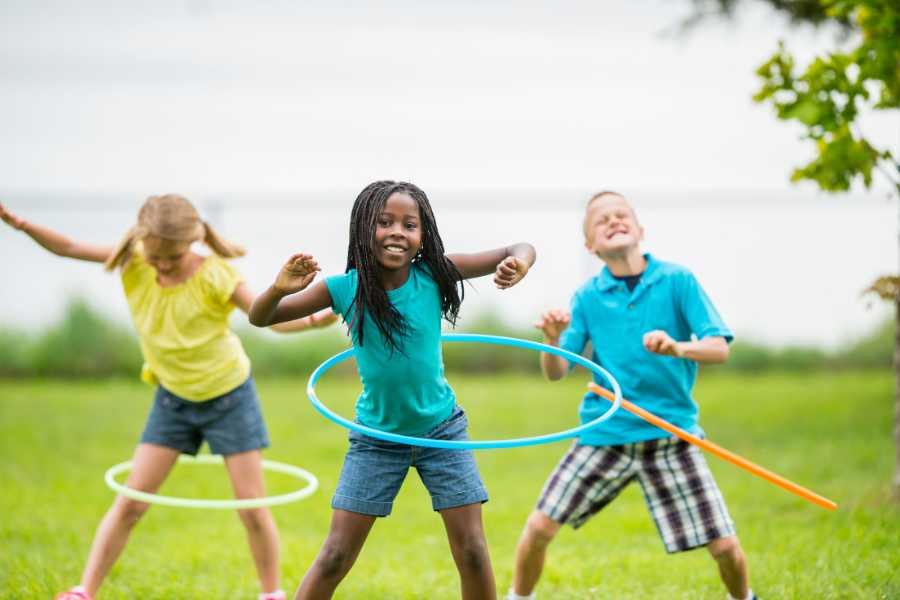
The Hula Hoop Contest is a fun movement activity that elementary students can enjoy greatly. The activity involves swinging a hula hoop around the hips, which requires practice and skill to master. While older preschoolers may succeed better with the activity, younger preschoolers or toddlers can still participate by playing with the hoop and trying the movement.
Once the children have built some skill, they can have a contest to see who can swing the hoop around their hips the longest. It adds an element of competition and can motivate them to polish their skills more. This engaging activity encourages elementary students to practice and develop their coordination and motor skills. It is also an inclusive activity for children of different ages and skill levels.
10. Long Jump Competitions
Having a long jump competition is a fun and simple movement activity that elementary students can enjoy. The activity involves:
- Marking off a starting point.
- Jumping from that point.
- Putting a piece of tape where they land.
The goal is to keep trying to beat their record by moving the tape further every time. It’s important to emphasize that the competition is not against each other but against our own records.
This encourages children to focus on self-improvement rather than competing with their peers. They can take turns trying to better their distance to make the activity more engaging. The competition can also be held at different levels multiple times, promoting various movement activities for Elementary Students without requiring additional training or effort. It’s a simple activity that can be easily set up with minimal equipment and can be adapted to different skill levels and ages.
11. Catch Bubbles

Catch Bubbles is a fun and engaging movement activity for elementary students. Kids love the thrill of chasing bubbles around the garden or playground, and this activity is excellent for practicing eye-hand coordination. To make the activity more challenging and competitive, you can turn it into a game and see how many bubbles your kids can pop each time you blow out a set. This encourages students to practice their hand-eye coordination and can help improve their reflexes.
You can add a rule that each child must catch at least one bubble and that two children can’t touch the same bubble. This adds an element of competition and encourages them to make quick decisions and move their bodies through space carefully. Overall, it’s an excellent way to encourage physical activity and improve hand-eye coordination, reflexes, and decision-making skills.
12. Sight Word Game
This is a fun movement activity for elementary students that helps them practice spelling and reading sight words while also getting some exercise. In this game, students spell out words by moving their bodies to form the letters of each word.
For example, they can jump to form the letter “J,” hop to form the letter “H,” and so on until they spell out the complete word. This activity can be done individually or in groups, encouraging children to use their bodies and minds simultaneously while having fun. It can highly improve literacy skills and creativity.
13. Obstacle Course Activity
Ask students to create an obstacle course in the garden to get some exercise. They can use recycled materials or things found around the garden to make the obstacle course more interesting. Try to change the obstacles regularly to keep the challenge updated.
Some great ideas for obstacles include jumping into or climbing over old tires, crawling through boxes or tunnels, balancing on planks of wood, hopping onto a ladder, weaving through cones or bottles filled with sand, and stepping on tree stumps. These Movement Activities for Elementary Students develop their motor skills and contributions while having a great time.
14. Ball and Bean Bag Toss
Ball and Bean Bag Toss are excellent movement activities for elementary students that increase physical fitness, contacts, and social networking. These activities can be done by throwing or tossing a ball into the target point, such as a hoop or a bucket. Students can practice their aiming skills, accuracy, and balance as they throw the ball or beanbag.
Additionally, these activities can be adapted to various skill levels, making them accessible to all students. Through group play, students can also develop communication, teamwork, and sportsmanship skills. The ball and bean bag toss are wonderful activities that provide opportunities for students to stay active and build important social and physical skills.
15. Ladder jumping
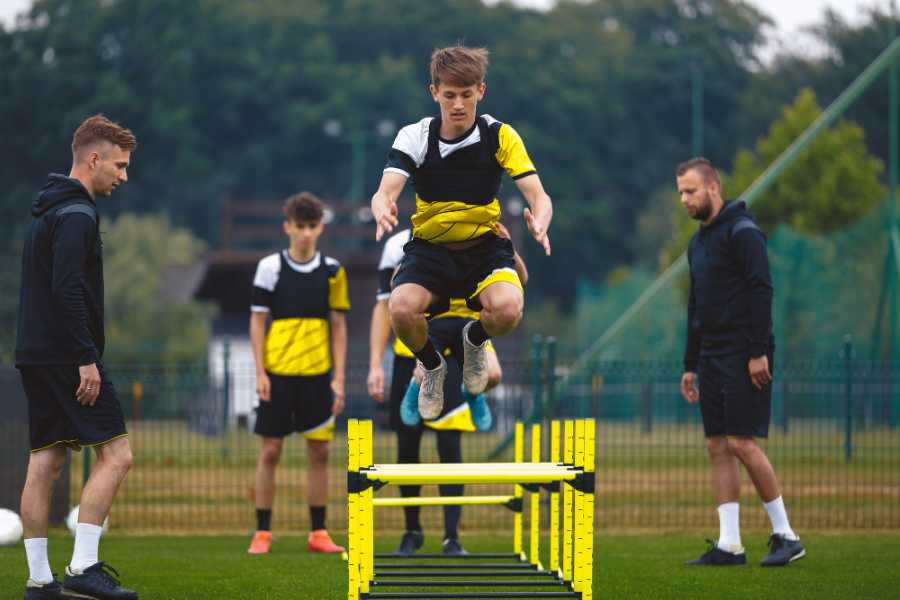
Ladder jumping is an excellent movement activity for elementary students that can be done with a jungle gym ladder, rope ladder, or regular household ladder. To start, lay the ladder flat on the grass and jump in between the rungs. This activity can be modified by jumping on alternating legs or hopping with two legs together for a more challenging workout.
Additionally, walking along the side edges of the ladder can help build balance. As hopping and jumping are important physical development milestones, this activity is a great way for kids to stay active and improve their coordination.
16. Charades Movement Activity for Elementary Student

Charades is a movement game that challenges students intellectually. This game involves acting out a word or phrase without using words to convey its meaning, which requires critical thinking and creativity. Charades can be played as a whole class or with students separated into teams to compete against each other.
This activity promotes physical activity and encourages students to develop their communication and problem-solving skills. By participating in this game, elementary students can also enhance their social skills by working collaboratively in a team setting. Precizingly, Charades are a fun and engaging way to promote physical and intellectual development in elementary students.
17. Freeze – The Movement Game
Freeze is a tag game where the tagged person must freeze in place until someone else unfreezes them by touching them. This game is best played with a group, such as a family or a classroom. Playing chasing Movement Activities for Elementary Students like Freeze can help students learn how to move their bodies effectively in space without colliding with objects or other people. These types of games can also improve children’s speed and reaction time.
By participating in Freeze, children can develop their gross motor skills while also having fun and socializing with others. Furthermore, this game can promote teamwork and communication as players work together to unfreeze their tagged peers.
18. Who Am I?

This activity encourages imaginative play and critical thinking among elementary students. To play, choose various animals and act out how they move. Players take turns guessing the animal the other person is imitating. For an added challenge, players can suggest different categories of animals, such as those that jump, fly, or run—for example, the tortoise, crab, elephant, seal, snake, butterfly, and rabbit.
By engaging in this activity, students can improve their physical coordination and also enhance their creativity and problem-solving abilities. Moreover, this game can help children develop their social skills as they interact and communicate with one another while playing.
19. Rolling Around Movement Activity
Rolling Around is a movement activity that involves pretending to be wood logs and rolling around on the grass. With arms stretched overhead, children can roll around on the grass and then move their hands to the sides and continue rolling. This activity is beneficial for coordinating the back, neck, shoulder, and hip muscles while also building strength.
Rolling downhill on a sloped garden or grassy bank in a park can add to the fun and provide an additional challenge. Students can lie on a blanket, roll themselves into the mat, and then out again, which can also help develop their motor skills. By participating in Rolling Around, they can be physically strengthened and have fun with imaginative play.
20. Move on Body Cards
Integrating movement into learning activities is an effective way to increase student engagement. A movement card game also lies under such type of Movement Activities for Elementary Students. This interactive activity allows students to choose their own movements. Alternatively, a movement leader can be selected to demonstrate movements that the rest of the group can mimic.
Students can benefit from improved physical health, increased focus and attention, and enhanced learning outcomes by incorporating movement into learning time. Additionally, movement integration can promote social and emotional development by providing opportunities for students to interact and collaborate with their peers. This strategy can be a valuable tool for teachers to enhance student engagement and improve learning outcomes in the classroom.
Final Words
In conclusion, Movement Activities for Elementary Students can provide a range of benefits for elementary school students, including improved physical health, increased focus and attention, enhanced learning outcomes, and social and emotional development. These activities can be simple and easily integrated into classroom routines, such as playing charades or freeze tag, or more structured, like ladder jumping or ball and bean bag toss.
These movement activities let teachers create a more engaging and dynamic learning environment that supports student well-being and academic success. These are highly effective ways to promote a holistic approach to education that supports the children’s development as a whole.

